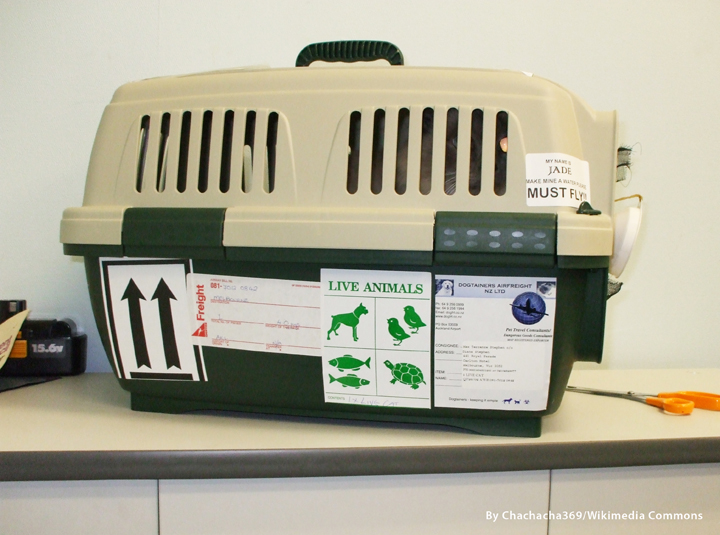New Rule Requires Fuller Picture Of Safety For Flying Pets
By Vicki Croke
Many of us cringe at the mere thought of having to place a beloved companion animal in the cargo hold of a commercial airplane, entrusting a creature we love to strangers for a long, stressful journey. We know there are real risks associated with air travel. Our pet could get loose and become lost or die from heatstroke among other heartbreaking scenarios.

But how much of a risk are we taking?
As The Seattle Times reports,
In all, Alaska [Airlines] and other U.S. carriers count several dozen animal injuries, losses or deaths annually — a minuscule fraction of the estimated several hundred thousand animals transported by air.
Looking at the reported data, it might seem that our risk is relatively small. But “seem” is the operative word. Airlines have not been required to track a complete picture of animal air safety.
As the Dallas Morning News explains:
Airlines only have to report when an animal is lost, injured or dies in transit if it is classified as a pet. Animals shipped by a breeder don’t qualify. Nor do research animals.
Wait. Animals shipped by breeders are not considered pets? That means that the safety of all those puppies flown to new homes by breeders are not counted in an airline’s reported records.
That will change beginning Jan. 1, 2015 under new rules from the U.S. Department of Transportation (DOT).
As the Humane Society of the United States reports on its website:
Previously, animals in planes that were a commercial shipment, such as a puppy going from a breeder or puppy mill to a purchaser, could be injured or even killed in shipment and the airlines were exempted from reporting. Now, all dogs and cats will be tracked. KC Theisen, director of pet care issues for The Humane Society of the United States issued the following statement:
“These numbers will allow the government and others to not only track the numbers of animals transported by airlines, but also the effect of that transport on the animals. This rule is a great leap forward in empowering consumers to understand the risks of pet air travel and to make wise choices about flying their pets in a cargo hold. More airlines will be required to report on the numbers of pets lost, injured or killed in transit, and these numbers will have more meaning in the context of all pet animals transported, including those for commercial sale.”
The new rule doesn’t go as far as many would like. According to the Dallas Morning News:
Airlines still won’t have to report information about zoo animals. And dogs and cats are the only research animals covered by the new rules.
